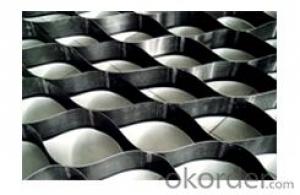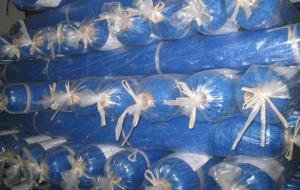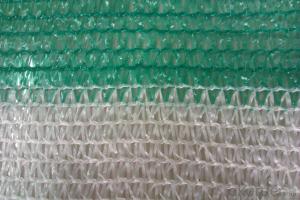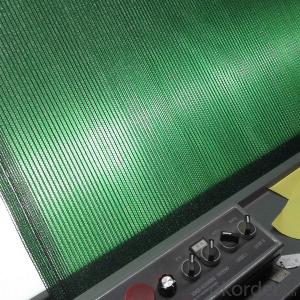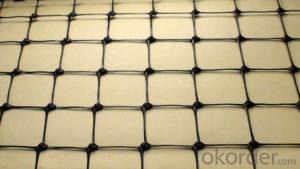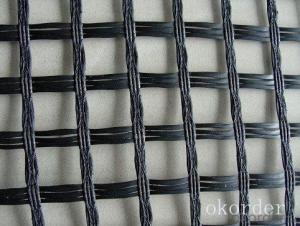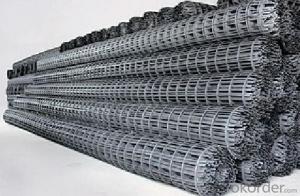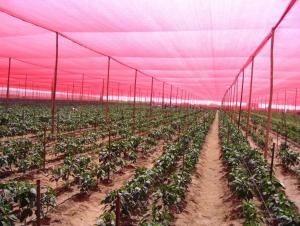Plastic Geocell Nets for Engineering
- Loading Port:
- China Main Port
- Payment Terms:
- TT OR LC
- Min Order Qty:
- -
- Supply Capability:
- -
OKorder Service Pledge
OKorder Financial Service
You Might Also Like
GEOCELL
Introduction of Geocell:
It is a net-shaped cell structure made by welding high intensity thermoplastic sheet.
Specification of Geocell:
TGLG5,TGLG8,TGLG10,TGLG15,TGLG20(CM)
Length: 4.1m~ 6.8m
Welding distance : 330mm—1000mm
Height :50-250mm
Surface : Textured or smooth surface
Color : black, brown, green
Properties of Geocell: Anti-aging, resisting acid and alkaline, homogenous structure, the best sidewise restriction and soil-fixation,convenient and fast construction.
Application of Geocell : Make the reinforcement treatment for soft soil foundation and protect the steep slope, used in hig way , railway ,airport, wharf, especially in weathered mountain forest, desert and swamp land etc
- Q: Can plastic nets be used for packaging baby products?
- Yes, plastic nets can be used for packaging baby products. They are lightweight, flexible, and provide adequate protection to the products, making them suitable for packaging various baby items such as toys, bottles, or clothing.
- Q: How do plastic nets affect soil health?
- Plastic nets can have negative effects on soil health. When used in agriculture, they can prevent natural air and water circulation, leading to soil compaction and reduced fertility. Additionally, plastic nets can obstruct the growth of beneficial microorganisms, disturb the natural ecosystem, and cause long-term damage to soil structure and quality.
- Q: Do plastic nets come with anti-corrosion properties for marine applications?
- Yes, plastic nets can come with anti-corrosion properties specifically designed for marine applications.
- Q: Do plastic nets come with anti-slip properties for industrial flooring?
- No, plastic nets typically do not come with anti-slip properties for industrial flooring.
- Q: Can plastic nets be used for creating bird cages?
- Yes, plastic nets can be used for creating bird cages. They provide a lightweight and durable option that allows ample ventilation for the birds. Additionally, plastic nets are resistant to rust and corrosion, making them suitable for outdoor use.
- Q: How do plastic nets affect air circulation?
- Plastic nets can hinder air circulation as they create barriers that restrict the natural flow of air. This can result in reduced ventilation and impede the exchange of fresh air, potentially leading to stagnant and stuffy environments.
- Q: Are plastic nets resistant to UV rays?
- Yes, plastic nets are generally resistant to UV rays.
- Q: What is a plastic net?
- A plastic net is a type of mesh or grid-like structure made from plastic materials. It is commonly used for various purposes such as packaging, gardening, and even in construction. The netting is flexible, lightweight, and durable, providing support, protection, and containment for different objects or materials.
- Q: Can plastic nets be used for packaging industrial machinery?
- Yes, plastic nets can be used for packaging industrial machinery. Plastic nets are lightweight, flexible, and provide efficient protection against scratches, dust, and minor impacts. Additionally, they allow for ventilation and visibility, which can be beneficial during transportation and storage of industrial machinery.
- Q: Can plastic nets be used for packaging furniture?
- Yes, plastic nets can be used for packaging furniture. They provide a cost-effective and efficient solution for protecting furniture during transportation and storage. The nets offer sufficient ventilation, allow for easy identification of the packaged items, and can be easily removed without causing damage to the furniture.
Send your message to us
Plastic Geocell Nets for Engineering
- Loading Port:
- China Main Port
- Payment Terms:
- TT OR LC
- Min Order Qty:
- -
- Supply Capability:
- -
OKorder Service Pledge
OKorder Financial Service
Similar products
Hot products
Hot Searches
Related keywords
